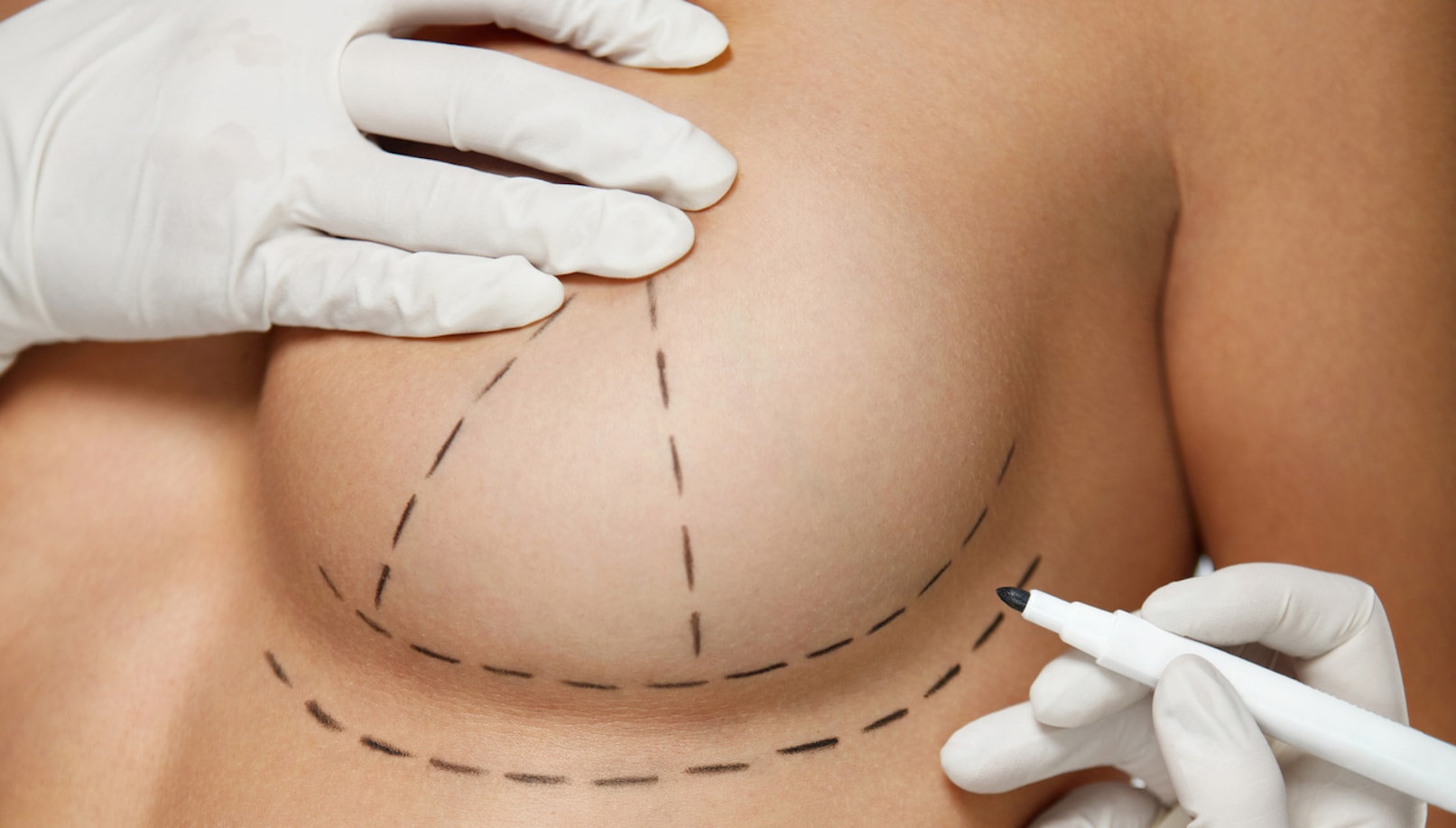
Breast augmentation is a surgical procedure used to enhance female breasts. The augmentation can be accomplished through the use of implants or fat grafting. Fat transfer is performed more on patients who require a reconstruction procedure after breast cancer. There are also a good number of doctors using fat transfer for breast reconstruction that are beginning to utilize it for cosmetic reasons when it comes to breast augmentation.
The two main types of breast implants are saline and silicone. In terms of the way they look, they look about the same after 3 or 4 months. The newer silicones have a more cohesive cross-linking and create more of a gummy bear structure.
It is important for patients to know that both types of implants can rupture. A patient will know right away if the saline ruptures because it flattens out. Silicone ruptures do not completely leak and will maintain its cohesiveness.
Saline implants come empty and are placed through a much smaller incision. Once in place they are inflated. With silicone, the incision is a little bit bigger. There is now a device called Keller Funnel which is used to put the implant in with no touch. The implant goes directly from the manufacturer box into the funnel (through a small incision) and from the funnel into the pocket.
There are different shapes and profiles with both saline and silicone. This means the volume as well as the certain shape and category is the same but the base width of the implant is different. The patient can get a different projection.
For example, a patient that wants larger implants but has a smaller frame would use the high profile implant. If a patient is wide-chested and wants better coverage, she would benefit from an implant with a larger base volume but less projection.
The teardrop-shaped implant is a completely different category. These implants are not round and they look like a teardrop. Because of the cohesiveness of the silicone, the upper pool of the implant does not drop and it maintains its teardrop shape as opposed to the round shape a patient gets with the usual implants.
The advantage of silicone is that it has a more natural feel and is less likely to show a rippling effect. The downside of silicone is that if it ruptures, patients do not know that anything has happened. Saline implants flatten out and the patient would know right away that a rupture has occurred.
Silicone can be shaped and can give a more natural teardrop look to the breast as opposed to the round one. Textured silicone implants are less likely to move around. For these reasons, the new silicone implants have more advantages compared to the saline implant.
Doctors do not want to put a really large implant in a patient that is, for example, 5’2”. It would not look right aesthetically. Usually, the limitation is based on the base width of a patient’s breast size.
There are other factors such as how much tissue laxity there is, where the position of the nipple-areola is located and where the position of the inframammary fold is located.
There are two main complication concerns when talking about breast augmentation surgery:
1. Surgical complications such as anesthesia, bleeding, infection, fluid collection, the scar becoming thick, or a change in sensation in the nipple-areola.
2. Potential complications include rupturing, the scar tissue around the implants becoming so thick that it changes the shape of the implants and the implants moving around and changing position from where they used to be.
Other complications include a rippling effect of the implant or the tissue becoming thin because the implant puts pressure on the patient’s tissue. It can even put so much pressure that it causes skin necrosis (skin death).
Patients will need pain medication for the first three days. They will also need help getting in and out of bed as well as getting around. After the third day, they will feel a lot better.
By the end of the week, they are pretty much back to normal. They can start driving and doing daily activities. If the patient has a desk job, they can go back to work after 2 weeks. Any kind of work that requires standing up a lot needs 4 to 6 weeks of recovery time.
The length of time implants last depends on the patient. Some patients had implants when they were 20 but they get older and feel like it doesn’t look right anymore. Other people had implants only three years ago but they feel like they are too big and want something smaller. They also might think they are too small and need something bigger.
Implants shift between 2-5% of the time. Shifting depends on:
1. The patient’s age and if they’re getting a lift versus just an implant.
2. The collagen and elastin content in their own tissue because more collagen and elastin means better support and less movement.
3. The size of the implant because a bigger implant has a better chance of moving around.
It is not a common complication for an implant to change position but it can happen. If it does happen, the doctor has to reposition the implant to where it was and then adjust the pocket accordingly to make sure that it stays in place.
Breast augmentation is not just for small breasts. The procedure can be used to correct loss of breast volume after pregnancy or after a massive weight loss. If patients have asymmetrical breasts, implants must be placed in order to gain symmetry. Patients should consult with a board-certified doctor to determine if they are a viable candidate for breast augmentation.
Written by Cosmetic Town Editorial Team - MA
Based on an exclusive interview with Alfred Sofer, MD in Fairfield, CT